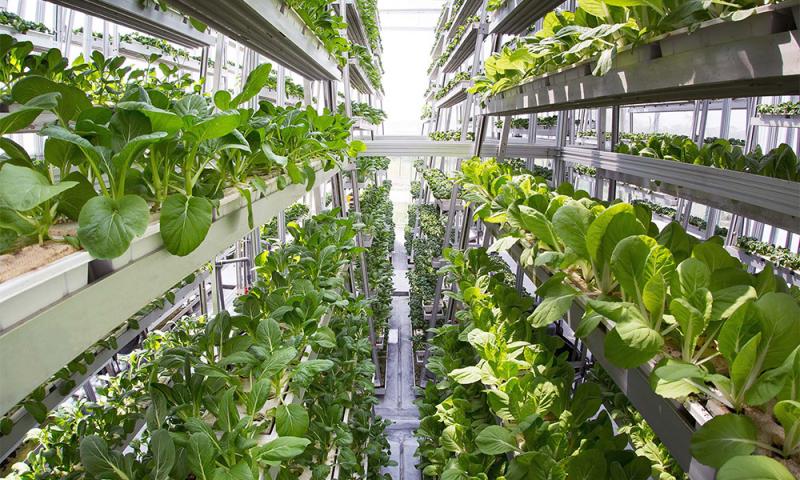Urban farming – key to reducing food imports
LETTER | The world’s population is expected to grow by another two billion people by 2050 – which has challenged the creative human’s mind to emerge with brilliant ideas to solve challenges posed by increasing populations.
One of the challenges is the food crisis, where according to experts, the demand for food will be 60 percent greater than it is today. This is worrying as the number grows, the number of arable lands will decrease – as more lands will be used to cater to the needs for industrial development and urbanization.
What is more worrying, scientists say that the earth has lost a third of its arable lands over the last 40 years. Can you imagine how much more we are going to lose in the next 40 years?
Thus, it is crucial for producing domestic production of foods as an approach to address the food crisis and reduce Malaysia’s dependency on imported foods. Owing to this issue, experts point out that urban farming is indeed one of the practical solutions to this crisis.
At its core, urban farming can be defined as “growing or producing food in or around urban areas”.
This activity has taken place worldwide but it is still unpopular in Malaysia due to lack of awareness and participation from the community. Nevertheless, Malaysia’s government perceives this activity as a stimulus towards achieving the well-being of the urban community and the natural environment.
While in Australia, the research found that urban farming has the potential to play a greater role in strengthening the food security of Australian cities and building urban resilience in a changing climate.
As new technologies emerged, people now can grow crops in places where it was previously impossible or difficult for farming.
According to experts, growing your food is very simple and rewarding although it takes a little time for you to master the skill. As for Malaysia’s climate, we can grow many basic kitchen crops that are easy to plant and take care of, such as water spinach (kangkong), spinach (bayam), eggplant (terung), chilli and lady’s finger (bendi).
Generally, urban farms can be as simple as small individual setups in the backyard of the house, cooperatives run by community groups or residents, or as complex as indoor vertical farms.
One of the Malaysian urbanites named Balan Nadarajan has 40 planter boxes to grow vegetables which were placed in the back lane of his terrace house in Puchong. According to him, 60 percent of the vegetables consumed by Balan’s family are currently from his garden, which means saving on their food bill.
Urban community farming on the other hand often occurs on empty land – private or public, or in areas such as squares, parks and schools. The basic model here is that a large group of people each contribute a relatively small amount of time to working their plot, and receive the fruits of their labour as a result.
As for vertical farming, the element of verticality gives the opportunity and necessity for urban farmers to grow crops on rooftops as well as inside the tall building. This indeed allows for efficient use of the limited space found in cities – so established space can be utilised better, instead of creating more arable land.
Crops grown on the rooftop or inside the building can be sold in its store downstairs, in the nearby neighbourhoods and even at the local restaurants. For beginners, experts suggest growing leafy greens, microgreens and herbs as they offer more competitive pricing due to high yields and the fact that they require less energy to grow.
Apart from the food crisis, why do we need to start practising urban farming?
Of course, food in its rawest and freshest form is packed with vitamins, minerals and antioxidants that you cannot fully get when you buy it at the supermarket. As vegetables will spend some time on a truck before being delivered to the supermarket, it will lose some of its precious nutrients.
Plus, most of the non-local produce is picked before it is fully ripe so it can survive the trip to the supermarket. This indeed may be great for business, but a plant that is allowed to ripe naturally contain much higher nutrients.
As for community perspective, urban farming empowers people from different cultures, genders, ages, races/ethnicities and socioeconomic classes to increase the social networks and bonds in the localities. Simply put, urban farming bridges the social gap between these people.
This is also a great platform to let people share their knowledge and hacks for planting.
Unremarkably, according to a study by the University of Pennsylvania, at the areas where urban farming is established, the residents’ pride is strengthened which lead to reduced crime rates.
As for now, urban farming may seem not to have any major impact, especially in small communities. Contrastingly, a report shows that if every global city practises urban farming, the agricultural industry could produce up to 180 million metric tons of food per annum.
With so many benefits we get from urban farming, it makes sense why researchers and environmentalists are encouraging urban farming and making the people aware of the major global, economic, social and environmental issues.
All in all, urban farming could be a momentous boon for areas with the resources to invest, feeding residents and bolstering the local economy.
NURAFIFAH MOHAMMAD SUHAIMI is Research Assistant at EMIR Research, an independent think tank focused on strategic policy recommendations based on rigorous research.
The views expressed here are those of the author/contributor and do not necessarily represent the views of Malaysiakini.
RM12.50 / month
- Unlimited access to award-winning journalism
- Comment and share your opinions on all our articles
- Gift interesting stories to your friends
- Tax deductable
